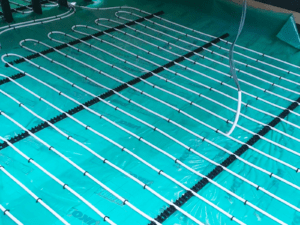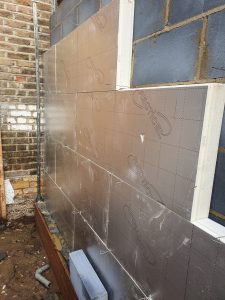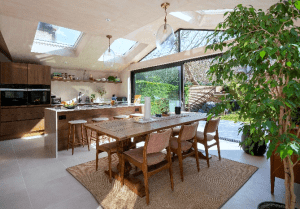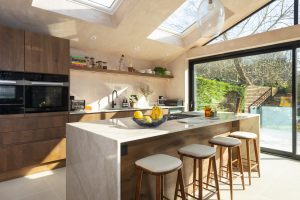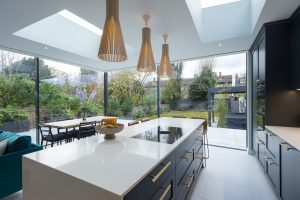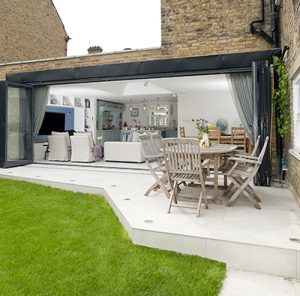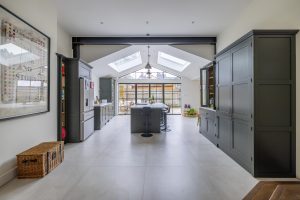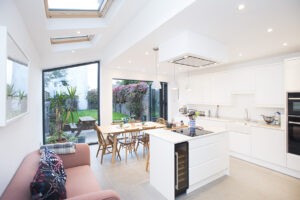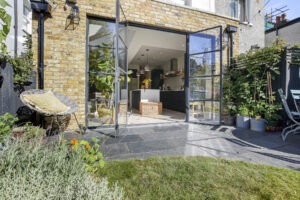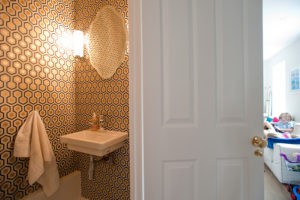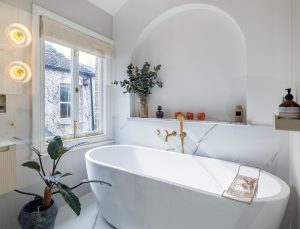If you are planning a new extension for your home, it is well worth considering the various ways to make your extension energy-efficient. Reducing your energy usage will lower the environmental impact of your extension, significantly reduce your energy bills and increase the value of your home for when you come to sell it. Prioritising energy efficiency is essential.
Energy conservation is something that has to be considered long-term. It often requires a higher investment up-front, but spending more at this stage will yield a better outcome in the future and save you a substantial amount over time.
Here, we bring you the latest information on how to build an energy-efficient home extension, including modern insulation, smart heating systems, glazing, and solar technology. We also mention the latest UK and EU incentives.
Insulating Materials
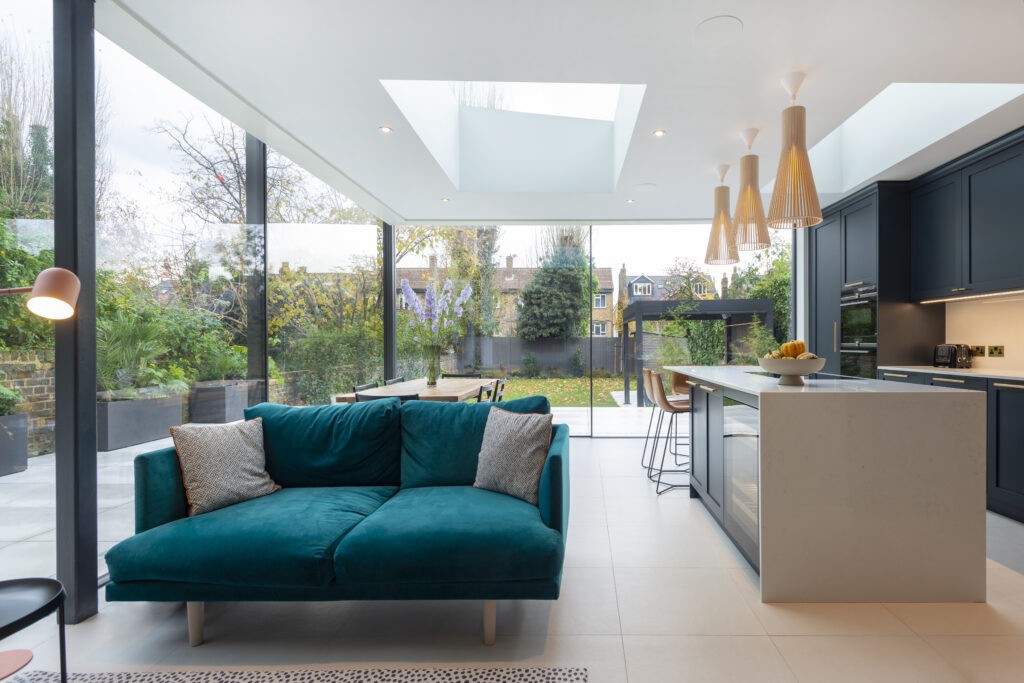
The building materials you choose for your home extension play a crucial role in reducing energy consumption from the outset. Good insulation is essential. Higher density materials like bricks, concrete and stone help to enhance wall insulation.
These materials not only absorb and store heat from natural sources like the sun, but also minimise heat transfer, thereby stabilising internal temperatures. This ensures that your extension offers a comfortable environment all year through so that its use is maximised. Concrete works exceptionally well with its significant thermal mass, reducing energy usage by a potential 30%.
It is important to consider good insulation of your floors and ceiling. Using rigid foam like Polyisocyanurate will provide comprehensive insulation from the ground up, as well as providing moisture resistance and strength. Insufficient roof insulation can cause heat loss up to 26%.
Installing good insulation in your extension can save you hundreds of pounds on your annual energy bill. It is important to spend time checking out the different types of insulation available and which will suit your extension best.
Currently, advanced insulation technologies such as ‘phase change materials’ (PCMs) are gaining traction. PCMs absorb excess heat and release it when temperatures drop. This helps to stabilise interior temperatures without active heating or cooling.
Eco‑friendly, bio‑based alternatives such as wood fibre, hempcrete, sheep’s wool, and recycled cellulose are increasingly being used in new home extensions. These materials not only offer excellent thermal performance but they also reduce embodied carbon, an essential consideration under new UK and EU sustainability goals.
Boiler and Heating Systems
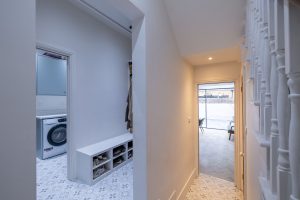
If you’re extension is substantially enlarging your home, you will need to consider upgrading your boiler as your current one may not be able to cope with heating any additional space. Getting a new boiler is advisable as modern models are designed to be more energy efficient, effectively heating your newly expanded home at a lower cost.
Whilst traditional gas boilers are still in use, air‑source and ground‑source heat pumps are now the more common choice. The UK’s Boiler Upgrade Scheme is still available in 2025 and offers up to £7,500 towards heat pump installation. Hybrid systems that combine a heat pump with a condensing gas boiler provide flexibility and energy resilience, especially in cooler climates.
Electric heaters are a tempting way to cut costs, but the drawback is that they are much less effective than modern boilers and will likely lead to higher long-term expenses. Investing in a new boiler ensures better energy efficiency and cost savings over time.
Choosing the right heating
Creating an energy efficient home doesn’t mean compromising on heating. There are heating options that can be highly effective and also cost effective.
Underfloor heating is an excellent choice as the primary heating source in your home. It distributes heat evenly and offers potential savings of up to 50% compared to central or electric heating systems.
If you plan to install radiators, carefully consider where they will be positioned. Putting them near larger pieces of furniture can cause heat absorption, while draughts can lead to energy wastage. Make sure to seal windows and doors to prevent gaps and to maximise efficiency.
Install smart thermostats, motion sensing, and zoned heating controls to fine‑tune temperature in different areas of your extension. Smart controls enable automatic adjustments, optimizing comfort and reducing energy use.
Invest in Quality Glazing for Better Heat Retention

Quality glazing plays a crucial role in energy conservation within your home.
Without proper protection and quality materials, as much as 40% of your home’s heat will escape through your windows and doors. It is therefore essential to invest in superior glazing options, such as double or triple glazing, as well as glass with high-performance thermal retention and low U-value (minimal heat loss) below 0.8 W/m²·K, which meets Passive House standards.
Smart glass and solar control glazing now adjust tint or reflectivity to reduce heat gain or loss automatically. This will help regulate the temperature in your home year-round, keeping it cooler in summer and warmer in winter. Moreover, quality glazing provides UV protection for your furniture and interior, enhances soundproofing and bolsters home security.
To maximise efficiency, ensure all gaps are properly sealed. Conducting an air-tightness test beforehand can pinpoint areas needing attention, ensuring your home remains energy-efficient and comfortable.
Creative Use of Glazing
The Innovative use of strategically placed glazing products is a great way of enhancing the energy efficiency of your home.
Natural light can be maximised by the use of large windows, skylights and stylish glazing features like sliding or bifold doors. Position larger windows to face south, east or west to harness sunlight effectively. Additionally, consider aligning windows across from each other to facilitate cross ventilation – this is particularly beneficial during warmer months.
Getting creative with your glazing can help regulate both the temperature in your home and increase natural light. This decreases the need for artificial light and thereby lowers overall energy consumption.
For new build extensions, photovoltaic (PV) glazing – solar-generating glass panels- are now increasingly possible, especially for skylights and roof-lights. These options can be paired with passive daylighting strategies such as well‑placed overhangs or louvres, to reduce overheating whilst maximising natural light.
Lighting

LED technology continues to improve. LED lights offer unparalleled energy efficiency in artificial lighting and can lead to a potential saving of 36% on lighting bills. Lifespans now frequently exceed 50,000 hours, with enhanced colour rendering and efficiency.
Integrate smart lighting systems such as motion sensors, timers, and smart‑hub controls, for automation, reducing wastage and enhancing convenience. The clever use of LED lights can enhance the overall look and ambiance of your home.
Energy Efficient Appliances
Home appliances and electronic devises can collectively account for up to 60% of your household’s energy consumption. Therefore, optimising energy usage in this area is crucial. Look for appliances such as dishwashers, fridges, washing machines and dryers with the updated UK A‑G energy labels or the latest
Energy Star ratings, which reflect tighter efficiency standards post‑2021. Many new appliances feature AI‑driven adaptive operation, adjusting usage based on occupant behavior or grid demand.
Solar Power

If you’re looking for a long-term upgrade to your home, consider integrating solar panels as an eco-friendly solution to power lighting, heating systems, appliances and water. Extensions provide an ideal opportunity to incorporate solar panels without compromising on space, maximising the utility of every square foot of your property.
Solar PV can be paired with battery storage systems to store excess energy and increase self-consumption—with potential benefits during power outages. Even if the panels cannot installed immediately, design your extension with a suitable roof pitch and orientation to ensure it’s solar‑ready in the future.
Solar panels not only offer substantial savings on energy bills but also boast a lifespan of up to 25 years, making them a fantastic investment that increase your home’s resale value.
Water Conservation
Water conservation is a vital aspect of sustainability and ways to reduce utility costs are often overlooked in home improvements. One effective approach is to install low-flow fixtures in bathroom and kitchen taps, which can significantly reduce water consumption.
Consider greywater recycling systems that reuse lightly used water – for example, from showers or basins, for toilet flushing or irrigation. Also, integrate smart water monitoring devices to track consumption and automatically detect leaks – this is common in modern 2025 smart homes.
Energy Management Systems
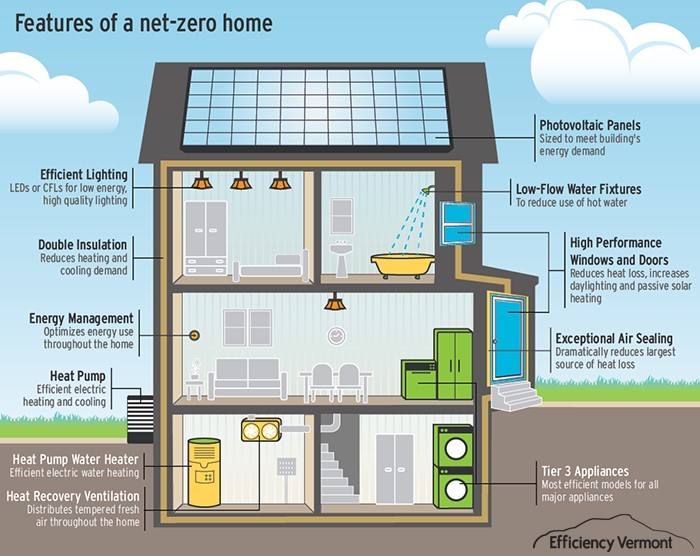
Energy Management Systems (EMS) have become a core component of energy-efficient home design in the UK, particularly in new builds and high-performance home extensions. Installing a whole‑house energy monitoring system allows homeowners real-time data on energy consumption across their heating, lighting, appliances and renewable systems like solar PV.
With the rollout of smart meters in more than 30 million UK homes by the end of 2025, as predicted by Ofgem, integrating EMS with these smart metering technologies allows for granular monitoring and remote control via mobile apps or smart home hubs.
Modern EMS platforms not only display usage statistics but can also deliver AI-driven recommendations and help users adjust patterns to reduce bills and carbon footprints. Some systems are now compatible with time-of-use tariffs (e.g., Octopus Agile), allowing devices or batteries to automatically charge or run during cheaper, greener periods of electricity supply.
In the context of the UK’s broader Net Zero Strategy, EMS also support demand-side flexibility, enabling homes to interact with the national grid—either by reducing demand during peak hours or exporting stored solar energy. Increasingly, government-backed initiatives like the Smart Systems and Flexibility Plan 2.0 (BEIS & Ofgem, 2021–2025) are encouraging the adoption of such systems to stabilise the grid and cut emissions.
As EMS become more affordable and integrated with mainstream devices, they are not just a luxury for eco-conscious households, they are becoming a necessity for any new, energy-resilient home extension.
Embodied Carbon Considerations
In 2025, reducing embodied carbon – the total greenhouse gas emissions associated with the production, transport, and installation of building materials- is an important and growing priority in sustainable home extensions.
Homeowners and builders are increasingly selecting locally sourced low-carbon, recycled or bio-based materials such as recycled steel, sustainably sourced timber, hempcrete, and lime-based mortars. Tools like the RICS Whole Life Carbon Assessment and LETI’s Embodied Carbon Primer are widely used to evaluate material choices.
As part of the UK’s movement toward net-zero construction, future regulations are expected to mandate whole-life carbon reporting for residential projects, making early consideration of embodied carbon a key step in future-proofing any extension.
Summary
The key thing to remember when considering your plans for a home extension is that it presents an ideal opportunity to enhance the energy efficiency of your home and is an excellent investment. Allocating resources wisely now can lead to substantial savings and benefits in the future.
Making your extension energy-efficient will bring long-term property value benefits and help ensure that your home meets future energy standards.
If you are thinking about extending? Need some advice? Contact Build Team today and embark on a seamless journey to transform your home with a beautiful and energy-efficient home extension, using our expertly guided and comprehensive extension services.


